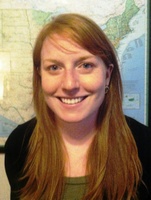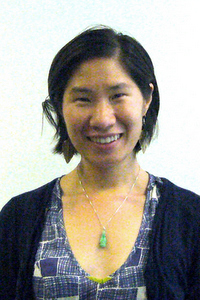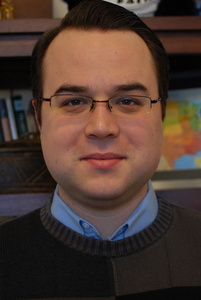2010 - Jessica Gershmann
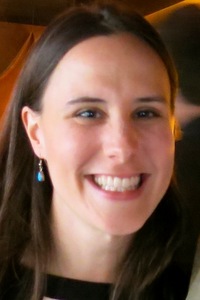
Jessica's path to regional planning began with her love of cities and her interest in the power of collaboration in policymaking. While growing up in auto-centric suburban St. Louis, Jessica has since chosen to live in cities that offer more accessible public transportation. Jessica studied Political Science at Tufts University, where she wrote her thesis on coalition building in municipal decision-making. Jessica got a glimpse of Chicago at its finest after a summer internship in 2004 and decided to return to the Midwest after college. She worked at the Metropolitan Planning Council before pursuing masters degrees In Public Policy and in Urban and Regional Planning at the University of Michigan.
What attracted you to the Phillip D. Peters Regional Planning Fellowship Program?
I had come to understand the important role that CMAP plays in our region while working in Chicago before graduate school. The Peters Fellowship seemed like the ideal opportunity to learn more about CMAP's work and to participate in planning efforts in the Chicago region, which is where I intended to live and work after finishing up my studies in Ann Arbor.
What kinds of projects did you work on during your fellowship? What benefit do you believe they contributed the northeastern Illinois region?
While I had the chance to work on a variety of projects, I spent most of my time supporting the public engagement and community outreach efforts during the formal public comment period for the draft GO TO 2040 regional comprehensive plan. Those outreach efforts contributed to thousands of residents and stakeholders providing feedback on the plan draft and having their voices heard, which was a critical component of the GO TO 2040 process.
How did the Fellowship help to shape your career path and ambition?
The Peters Fellowship was a very influential point along my career path, as it solidified my interest in focusing on regional planning professionally. Additionally, it exposed me to the practice of public participation, which has carried into my work today.
What did you find to be special about CMAP?
CMAP has a unique position in the region, not only cultivating the nexus between land use and transportation planning, but also helping to coordinate efforts across local governments in northeastern Illinois. It is a well-functioning and visionary public entity, which allows it to be a dynamic and responsive resource for communities in our region.
What makes the northeastern Illinois region a special place to work as a regional planner (or related field)?
Northeastern Illinois has many outstanding assets – from its freight rail network to its cultural vibrancy – that make it an excellent place to work in regional planning. This inspires planners to work hard to preserve and enhance those strengths for future generations.
What are you doing professionally now?
I was fortunate to finish graduate school around the time when CMAP's Local Technical Assistance (LTA) program was launched, and so I had the opportunity to join the CMAP team as an outreach specialist and planner in the local planning division.
Why is regional planning an important function in a metropolitan region?
Regional planning encourages a metropolitan area's local governments to coordinate with each other, which leads to efficiency as well as the realization of common goals. Many communities may face the exact same challenges or strive for similar improvements to their quality of life, and by planning as a whole instead of in silos, a region can take better care of its shared systems and strengthen its collective economic vitality to the benefit of all residents.
2009 - Stephanie Dock
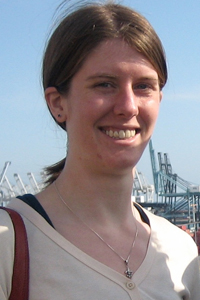
Stephanie credits growing up in the emerging Minneapolis suburbs as the daughter of a transportation engineer and planner as the major reasons she ended up in the field of transportation planning. Graduating from the University of Chicago in 2006, Stephanie took a position as Chicago's prestigious Center for Neighborhood Technology, contributing to smart growth initiatives not only in and around Chicago but also in Maine, Milwaukee and Indiana. Stephanie then headed west, to pursue her Masters of City Planning at the University of California at Berkeley – with a concentration on transportation planning.
What attracted you to the Phillip D. Peters Regional Planning Fellowship Program?
It was an opportunity to see what was happens at the regional level in Chicago. I am a believer in the need for regional governance—too much happens at the regional level for planners not to be acting at that level. Also, it was in Chicago, a region I love and know well.
What kinds of projects did you work on during your fellowship? What benefit do you believe they contributed the Northeastern Illinois region?
I worked on several projects during my Fellowship, which began with the early work on GoTo 2040. I also participated in the Congestion Mitigation and Air Quality Improvement Program (CMAQ). This was so fascinating that I used it as the basis for my Masters project.
How did the Fellowship help to shape your career path and ambition?
It reinforced my interest in the public and non-profit sectors. I had never worked in a public agency and this was a great way to start. It also reinforced my passion for regional planning and demonstrated that there are big steps to be taken in that arena. I may eventually bring this back to Chicago, or perhaps the federal level.
What did you find to be special about CMAP (or NIPC)?
The people at CMAP are the agency's biggest asset. I was really inspired by the people I worked with and, in particular, the younger planners. Also, having worked where there are some major planning capacity issues, I recognized the value of the technical assistance that CMAP provides.
What makes the Northeastern Illinois region a special place to work as a regional planner (or related field)?
The transportation! There is so much of it and, even better, a lot of it is rail. I had little trouble living car-free in Chicago and regularly got to my suburban destinations on Metra.
What are you doing professionally now?
I am a newly-minted Master of City Planning, heading to the Washington, D.C. region to work as a Transportation Associate for ICF International.
Why is regional planning an important function in a metropolitan region?
Our economy functions at the regional level, our transportation system is regional and our social networks are often regional. Given how much happens at the regional level, we need a level of regional planning, coordination and dialogue to move forward in the long-term.
2008 - Kevin C. Luecke
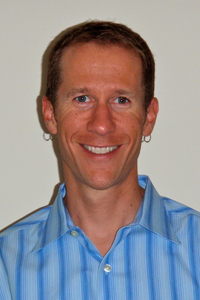
With the metropolitan region of Chicago stretching beyond the borders of Illinois into Indiana and Wisconsin, Kevin is the ideal individual to be participating in Chicago's regional planning. Born and raised in South Bend, Indiana, Kevin did his undergraduate studies at Northwestern then held professional positions in Indiana and Wisconsin. In the fall of 2006, Kevin enrolled at Wisconsin pursuing not only a Masters in Urban and Regional Planning, but also a Masters of Public Administration, plus a certificate in Transportation Management and Policy. Amazingly, he finished it in three years.
What attracted you to the Phillip D. Peters Regional Planning Fellowship Program?
I am a strong believer in regional governance and the opportunity to work in Chicago — an area I had lived in for over four years — was appealing. The opportunity to select the projects that I was involved with at CMAP also appealed to me.
What kinds of projects did you work on during your fellowship? What benefit do you believe they contributed the Northeastern Illinois region?
I worked on drafting the Public Transportation Strategy Report for GO TO 2040. I also spent time working on public input sessions that were conducted for the Regional Indicators Project.
How did the Fellowship help to shape your career path and ambition?
Working at CMAP reconfirmed my belief that regional governance is important, particularly for transportation issues. While working there, I was able to see a lot of the dysfunction stemming from our heavily fragmented planning system. It motivated me to work for an organization that approaches planning with more of a big picture focus.
What did you find to be special about CMAP (or NIPC)?
I liked that CMAP was a regional agency looking at the big picture. In addition, there is value in combining different practitioners and fields under one roof, allowing better collaboration and integration of ideas that fit together.
What makes the Northeastern Illinois region a special place to work as a regional planner (or related field)?
Chicago is a world-class city surrounded by many great communities. The huge number of municipalities in the area makes it an ideal location for regional planning.
What are you doing professionally now?
I live in Madison, Wisconsin and am the lead planner for the Bicycle Federation of Wisconsin. I work on advocacy issues throughout the state and perform consulting work for municipalities including producing bicycle plans.
Why is regional planning an important function in a metropolitan region?
Regional planning is critical because so many services and planning functions provided by municipalities do not stop at their borders. Transportation, environmental issues, public safety, and other areas are all best handled regionally for greater efficiency and potential cost savings.
2007 - Erin Aleman
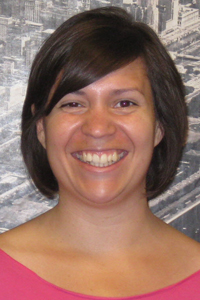
Raised in Michigan, Erin's journey to regional planning started in the fine arts. Studying art brought her to Chicago, Detroit and Cleveland, where she fell in love with cities. "I love the creative process of community collaboration and development," Erin mentioned recently. Enrolling at the College of Urban Affairs at Cleveland State University, she won the Maxine Goodman Levine Fund award. Upon graduating, she received the Wallace Teare Prize presented to a master of urban planning graduate student concerned with housing and equity. Her positive experience at CMAP led her to accept a full-time position there.
What attracted you to the Phillip D. Peters Regional Planning Fellowship Program?
It was an opportunity to explore planning and policy issues at a level that I hadn't experienced previously. I had lots of experience working with community-based organizations, but never with a regional organization like CMAP with such a broad scope.
What kinds of projects did you work on during your fellowship? What benefit do you believe they contributed the Northeastern Illinois region?
I worked on a series of technical assistance workshops. CMAP had recently developed the Centers Toolkit, an interactive planning decision software program allowing community planners to prioritize different planning strategies. The workshops allowed CMAP to provide community planners with a tool they could use in future planning efforts.
How did the Fellowship help to shape your career path and ambition?
I was drawn to the Fellowship because of its regional perspective. After working at CMAP for the summer, I developed a tremendous appreciation for the work a regional agency can do.
What did you find to be special about CMAP (or NIPC)?
CMAP is different than other metropolitan planning organizations. The key is that CMAP looks at transportation and land use planning through a common lens. It's very special to me that I work for an agency that is open to thinking about traditional planning in a new way.
What makes the Northeastern Illinois region a special place to work as a regional planner (or related field)?
I love living in Chicago because it's diverse, affordable and has public transit.
What are you doing professionally now?
After my experience as a Peters Fellow, I was hired by CMAP to continue to provide technical assistance and outreach for the regional comprehensive plan – GO TO 2040.
Why is regional planning an important function in a metropolitan region?
Regional agencies can enhance multi-jurisdictional communications and collaboration, serving as a facilitator and convener. If the Chicago region is to stay competitive in a growing global economy, public agencies and inter-governmental agencies like CMAP need to work together.
2006 - Gretchen Minneman
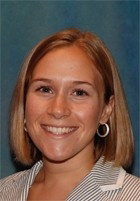
The Peters Fellowship can prepare a student to make a major impact in a metropolitan region other than Chicago. During high school, Gretchen's senior thesis focused on analyzing writings about the various neighborhoods of Chicago. "Without knowing it," she said, "in that paper, I had discovered my chosen profession." At University of Illinois, Gretchen discovered the field of Urban and Regional Planning. Gretchen was a Peters Fellow while completing her Masters at Rutgers University in City and Regional Planning. Today, Gretchen lives in New York City and works at The Port Authority of NY & NJ.
What attracted you to the Phillip D. Peters Regional Planning Fellowship Program?
The Fellowship was different than most internships because the Fellow really got to chart his or her own course for the summer. The staff at CMAP want to expose the Fellow to as much of their work as possible and to provide the opportunity to dig into a real project.
What kinds of projects did you work on during your fellowship? What benefit do you believe they contributed the Northeastern Illinois region?
I worked on the Calumet Rivers Redevelopment Project, which brought together seven municipalities located along the Calumet River to create a comprehensive redevelopment plan. I also worked on the Full Circle program, working with and training community-based organizations in low-income neighborhoods.
How did the Fellowship help to shape your career path and ambition?
It was my first hands-on exposure to working with local community development organizations. I draw upon those experiences still today. I learned how to facilitate neighborhood meetings, bring together groups with differing ideals and create a vision for the future.
What did you find to be special about CMAP (or NIPC)?
CMAP was my first exposure to a regional planning agency. I saw first-hand the "interconnected-ness" of transportation, economic development and neighborhood redevelopment.
What makes the Northeastern Illinois region a special place to work as a regional planner (or related field)?
Northeastern Illinois is growing rapidly. As people and companies keep moving further out, infrastructure and quality of life must keep pace. The region faces a difficult task. CMAP can help shape the region's new landscape.
What are you doing professionally now?
I am a Senior Urban Planner at The Port Authority of NY & NJ. I sought the position because I knew that their projects touch the everyday lives of every commuter, visitor, business person and resident in the New York/New Jersey area.
Why is regional planning an important function in a metropolitan region?
Without regional planning, necessary infrastructure would not be built, communities in need of expertise and assistance would fall through the cracks, and the region would not develop cohesively. My experience at CMAP showed me the value of regional planning in a metropolitan region.
2005 - Seferinus Okoth
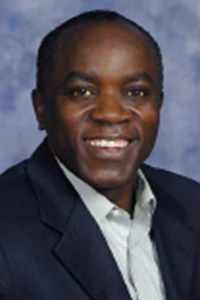
With Sef, the Peters Fellowship inspired a talented student to stay in the field of regional planning. Born in a small rural village in Kenya, Sef attended the University of Nairobi. He moved to the United States to pursue graduate studies in civil engineering, but discovered he could not afford the the program. Not defeated, Sef attended the University of Akron for a Masters degree in Urban Planning. Sef was awarded the "Friend of the Environment Award" by Little Village Environmental Justice Organization and is the project manager for the Full Circle project, helping Chicago communities to plan their neighborhoods.
What attracted you to the Phillip D. Peters Regional Planning Fellowship Program?
NIPC offered the opportunity to get first-hand experience working in a premier planning organization in one of the largest, best planned cities in the United States.
What kinds of projects did you work on during your fellowship? What benefit do you believe they contributed the Northeastern Illinois region?
The Full Circle project is a community mapping and planning program that helps communities with planning, development and policy work. I also created the first regional watershed map for Chicago Wilderness.
How did the Fellowship help to shape your career path and ambition?
I never intended to stay in the planning profession, as I planned to move to a higher-paying profession. However, after the Peters Fellowship, I decided that planning was the profession for me because I could make a difference in people's lives. The Peters Fellowship helped me choose community development as my specialization so that I could work more directly with community residents to help create some positive change in economically distressed communities.
What did you find to be special about CMAP (or NIPC)?
CMAP is one of the leading planning organizations in the country and coordinates the planning of a region with a legacy of pioneering planning ideas for more than a century.
What makes the Northeastern Illinois region a special place to work as a regional planner (or related field)?
Chicago offers great social and economic opportunities for its residents. For its size, Chicago is fairly affordable and the region has one of the best public transit systems in the country. The long history of community organizing in Chicago resulted in active participation from the residents in the planning and development of their communities. The diversity of the region is also one of its likable attributes.
What are you doing professionally now?
After completing my graduate studies, I joined NIPC as an assistant planner. After the merger of NIPC and CATS, I joined CMAP and am currently an associate planner.
Why is regional planning an important function in a metropolitan region?
Most planning challenges are not local but regional in nature. Without taking a coordinated regional approach to community problems, most urban problem cannot be solved.
2004 - Monica Medrano

Raised on Chicago's southwest side, Monica enrolled in the Urban Planning and Policy Graduate Program at the University of Illinois, Chicago, focused on Community Development. Raised in an urban area in need of resources, she always had an interest in community development. "Economically, physically, and politically, my neighborhood lagged behind others", she said, "I have witnessed first hand how a community can decay if its residents do not have the resources to come together and take action". As a Peters Fellow, she put her community development learning to work on key initiatives.
What attracted you to the Phillip D. Peters Regional Planning Fellowship Program?
In 2004, NIPC was the regional planning leader in the Chicago metropolitan region. I read about Mr. Peters and was impressed with all the work he accomplished during his tenure with NIPC. It was an honor to be awarded this Fellowship.
What kinds of projects did you work on during your fellowship? What benefit do you believe they contributed the Northeastern Illinois region?
I coordinated outreach efforts for the Common Ground Initiative, an comprehensive planning effort to gather broad community input in public meetings across the six-county Chicago metropolitan region. I also facilitated discussions with community groups involved in Full Circle Neighborhood Planning Initiative, a community mapping and planning project.
How did the Fellowship help to shape your career path and ambition?
I learned the value of obtaining community input and support. They are critical to effective planning processes. Since my time at NIPC, I have used some of these participatory planning techniques in my work.
What did you find to be special about CMAP (or NIPC)?
NIPC provided a broad over-arching, comprehensive perspective on regional planning. This was especially important for an eager, urban planning student like myself. During my fellowship, I also met very kind and intelligent people at NIPC—I learned so much from them and am highly appreciative of my experience.
What makes the Northeastern Illinois region a special place to work as a regional planner (or related field)?
As a Chicagoan, I truly appreciate the numerous planning opportunities…from traditional city planning to community development to affordable housing to green sustainability to land use to transportation to new urbanism…and more!
What are you doing professionally now?
I am currently the Homeownership Supervisor at the Illinois Housing Development Authority.
Why is regional planning an important function in a metropolitan region?
It's essential to a metropolitan region like Chicago because we need to share our limited resources amongst our communities. Bringing the various stakeholders to the table is essential to strategically plan for the future.
2003 - Audrey W. Wennink
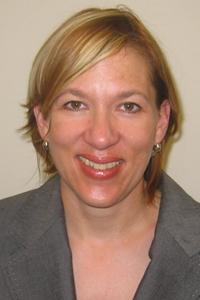
Sometimes, the Peters Fellowship can help someone follow their dream. Such is the case with Audrey, who arrived in Chicago by way of Connecticut and Spain. "I came to the realization that I wanted to have my work contribute to positive change in society," she said. She was attracted to the fact that urban planning sought to create a better quality of life for individuals. She pursued a master's degree in urban planning and policy at the University of Illinois at Chicago, focused on land use and transportation planning. Today, she continues to work toward a better society as a consultant in the field of transportation planning in the Northeastern Illinois region.
What attracted you to the Phillip D. Peters Regional Planning Fellowship Program?
During my studies, I was most attracted to regional planning, which is what interested me in NIPC.
What kinds of projects did you work on during your fellowship? What benefit do you believe they contributed the Northeastern Illinois region?
I worked on Common Ground, the regional comprehensive planning effort. I was also involved in discussions about how regional planning decisions get made. Planning commissioners have a big role in decisions at the jurisdictional level, but don't often understand the regional impact of certain decisions. Ultimately, NIPC went on to set up a program of plan commissioner training.
How did the Fellowship help to shape your career path and ambition?
Common Ground allowed me to learn how transportation is linked to other key regional issues such as land use, economic development and environmental planning. I stayed on at NIPC for my last semester of studies and eventually worked on a contractual basis for the agency for a short time after graduation.
What did you find to be special about CMAP (or NIPC)?
A regional agency is critical to greater Chicago given the large number of local jurisdictions. Someone has to be looking at the big picture.
What makes the Northeastern Illinois region a special place to work as a regional planner (or related field)?
Northeastern Illinois comprises the country's third largest metropolitan area. The Great Lakes' fresh water supply will become increasingly important given global warming and an increasing global population. We must carefully manage our growth to manage any negative impacts on natural resources. Additionally, many opportunities exist in Northeastern Illinois for increased transportation efficiency and to make alternative transportation more appealing.
What are you doing professionally now?
I'm an Associate at Cambridge Systematics, a private consulting firm that conducts transportation planning.
Why is regional planning an important function in a metropolitan region?
Local jurisdictions in a county region have their own objectives; a regional agency is important to strategic thinking and a long-term perspective for the region.
2002 - Kerri Johnson
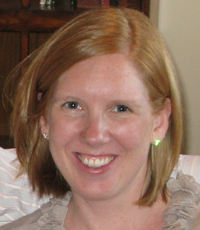
Kerri shows us how vast the field regional planning – and CMAP's mission – truly is. Raised in St. Louis, Kerri graduated from the University of Illinois, Urbana-Champaign with a degree in Natural Resources and Environmental Science. She moved to Chicago to attend the University of Illinois at Chicago to pursue a degree in Urban Planning. Her goal was to be involved in the process of redeveloping contaminated properties. Kerri's Peters Fellowship at NIPC gave her hands-on experience in sustainable development and regional planning. Kerri remained with NIPC as a research assistant and eventually took a full-time position as a planner.
What attracted you to the Phillip D. Peters Regional Planning Fellowship Program?
I felt it would allow me to learn first-hand about the issues facing the region. Unlike traditional internships, I was encouraged to learn about other organizations in the region and the issues these organizations faced.
What kinds of projects did you work on during your fellowship? What benefit do you believe they contributed the Northeastern Illinois region?
I worked on two projects. The Sustainable Development Guidebook is a resource for municipalities to implement sustainable practices. Common Ground is the public participation process for the regional comprehensive plan. Getting the public involved in the planning process will help the region plan for the common good.
How did the Fellowship help to shape your career path and ambition?
The projects re-enforced the importance of public participation in the regional planning process and I continue to be an advocate for public involvement. After completing the Fellowship, I continued working at NIPC and then hired as a planner for NIPC/CMAP.
What did you find to be special about CMAP (or NIPC)?
Working at NIPC gave me exposure to a wide variety of regional issues. The staff was dedicated to improving the region and making it a better place to live.
What makes the Northeastern Illinois region a special place to work as a regional planner (or related field)?
The Chicago region is diverse, from the urban areas of Chicago and the inner suburbs, to the rural areas on the outskirts of the region. Getting everyone to work together was an exciting challenge.
What are you doing professionally now?
I am currently at home caring for my two sons – Will (2 ½ years) and Henry (4 months). I chose to stay in Chicago after graduation because it's a great city. It has all of the opportunities and experiences of other large cities, but it also has solid Midwestern values.
Why is regional planning an important function in a metropolitan region?
The only way a region can succeed is if all of its parts work together. Regional planning helps to bring everyone to the table to work together to plan for a better future.
2001 - Tanvi M. Parikh
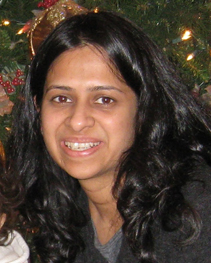
Born and raised in India, she earned her undergraduate degree in Architecture -- recognized as the top female in her graduating class. While pursuing her Masters in Urban Planning at University of Michigan, she was selected for the Peters Fellowship. Enjoying her experience in Chicago, Tanvi finished her degree at the University of Illinois at Chicago and took a position at the Chicago offices of Skidmore, Owings & Merrill. She drew upon her Fellowship experience for her work on the Master Plan for the Country of Bahrain. Tanvi has since returned to India and to teach urban design at the graduate School of Planning and Architecture in Delhi.
What attracted you to the Phillip D. Peters Regional Planning Fellowship Program?
The opportunity to work with a planning agency in a metropolitan area was very exciting. The Fellowship gave me the ideal opportunity to work on various projects across departments and see the workings of a metropolitan planning agency.
What kinds of projects did you work on during your fellowship? What benefit do you believe they contributed the Northeastern Illinois region?
I primarily worked on the Common Ground project, which made the 2040 Regional Framework Plan a true "people's plan." Participation by residents, elected officials and community leaders in the process will make the 2040 Regional Framework plan more successful than its predecessors.
How did the Fellowship help to shape your career path and ambition?
Common Ground was a terrific learning experience and I decided to transfer from the University of Michigan, Ann Arbor to the University of Illinois at Chicago so that I could continue working on the project. Since then my work has been focused on the rebuilding of inner cities.
What did you find to be special about CMAP (or NIPC)?
The commitment of the staff at NIPC to Common Ground was exemplary. It was a new process, which required new methodologies. It required immense dedication from the project team to make it a truly successful process.
What makes the Northeastern Illinois region a special place to work as a regional planner (or related field)?
Chicago has a great architecture and planning legacy. It is one of the few cities in the world that has managed to provide the people who live there inhabitants with uninterrupted access to the waterfront. It is a green city and has a culture of preservation and innovation.
What are you doing professionally now?
After finishing my masters at UIC, I joined Skidmore, Owings and Merrill as an urban planner. I worked on a range of planning projects in the U.S., Europe, China and India. Thereafter, I moved back to New Delhi, India.
Why is regional planning an important function in a metropolitan region?
In our rapidly urbanizing world, long-term planning at the urban, regional and national levels are necessary for sustainable development.
2000 - Keith Sbiral
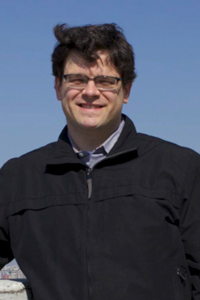
Like Phil Peters himself, our very first Fellow hailed from the State of Iowa. After undergraduate years noted by an internship in the Office of the Vice President of the United States, Keith received his graduate degree in Urban and Regional Planning at the University of Iowa. Since then, Keith has remained in Northeastern Illinois in public planning roles. After stints in Barrington and Downer's Grove, Keith now serves as Assistant Village Manager in Brookfield, Illinois. In that role, he wears many hats including Director of the Building and Planning Department and Village Treasurer. Keith remains active with the Peters Fellowship Program, as member of the Advisory Committee.
What attracted you to the Phillip D. Peters Regional Planning Fellowship Program?
I was fascinated by the idea of a regional agency in the Chicagoland area. I knew I wanted to be in Chicago and this fellowship could provide the experience I was seeking after my first year of graduate school.
What kinds of projects did you work on during your fellowship? What benefit do you believe they contributed the Northeastern Illinois region?
Many of the projects that I worked on ten years ago were the foundation for the Biodiversity Recovery Plan, and the plans leading up to the GO TO 2040 Plan. "Cutting edge" storm water pilot project ten years ago are now regularly implemented in municipalities all over the region. Not only do I work to implement them in the community I work for, but I also feel like I was part of building this foundation.
How did the Fellowship help to shape your career path?
The Northeastern Illinois Planning Commission provided the foundation for my regional knowledge. My summer allowed me to have experiences and make connections that have continued to help me over the past decade.
What did you find to be special about CMAP (or NIPC)?
As the first Peters Fellow the program was in its infancy. The entire NIPC family embraced the program and made sure that my fellowship was incredibly beneficial.
What makes the Northeastern Illinois region a special place to work as a regional planner (or related field)?
Northeastern Illinois is a vast and complex web of local governmental bodies desperately in need of a comprehensive regional approach to solving problems. That is what makes planning interesting.
What are you doing professionally now?
I am currently the Assistant Village Manager for the Village of Brookfield, Illinois. I manage Planning and Economic Development responsibilities of the Village. The connections gained during my fellowship and our experiences in Chicago led my wife and I to settle here after growing up in Iowa.
Why is regional planning an important function in a metropolitan region?
Attempting to solve complex problems with regional implications require regional solutions. So many planning issues we face can be more efficiently and effectively solved when a regional approach is embraced.


